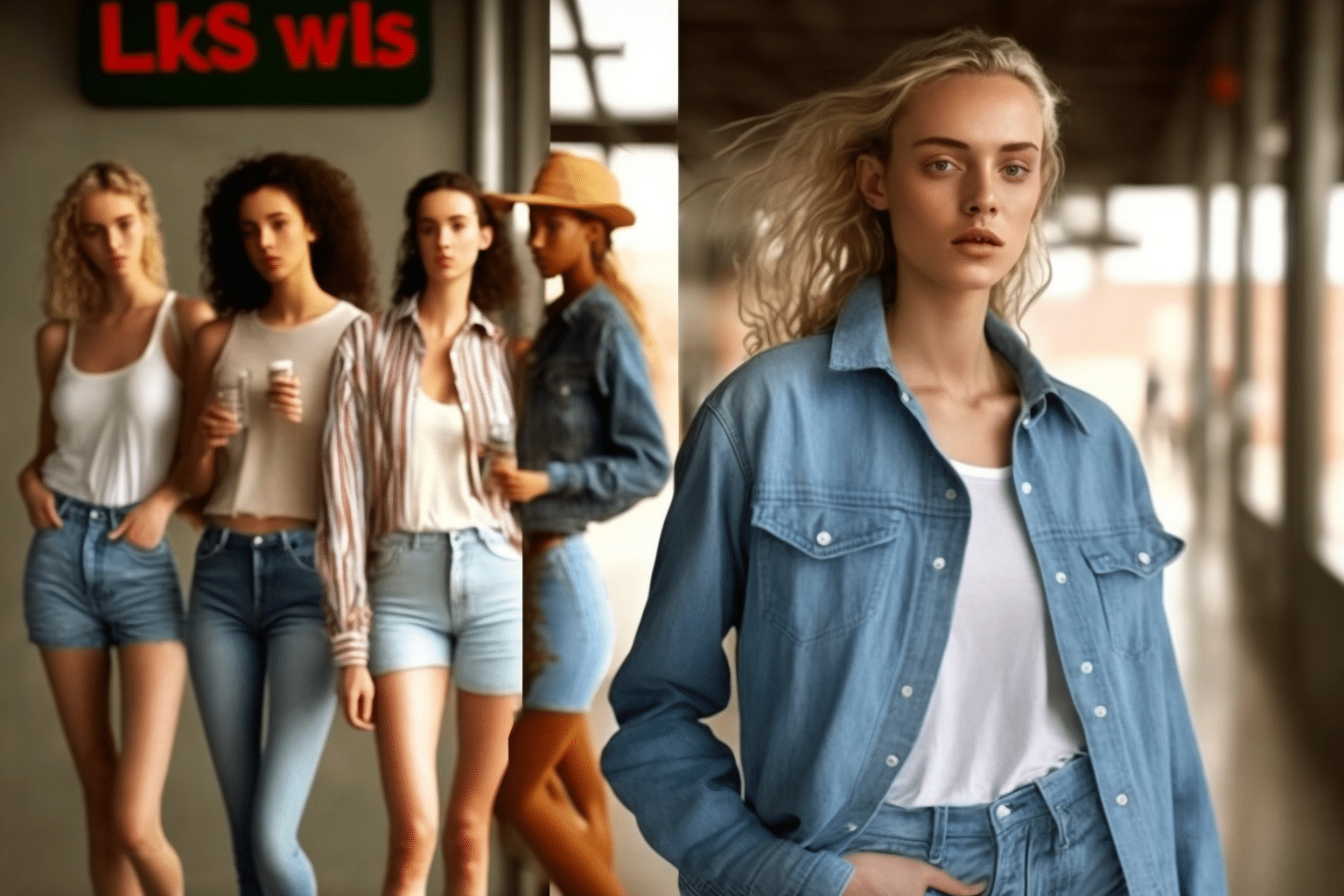Fashion brands like Levi’s and Calvin Klein have started using custom AI-generated models to enhance size, skin tone, and age representation. Levi’s collaborated with digital studio LaLaLand.ai, which creates personalized AI models for other brands like Tommy Hilfiger and Calvin Klein, to develop an AI-generated avatar for their upcoming campaign.
Levi’s global head of digital and emerging technology strategy, Amy Gershkoff Bolles, announced the debut of the AI model during a Business of Fashion event. She explained that these AI models would not entirely replace human models but would supplement them better to represent different sizes, skin tones, and ages.
LaLaLand.ai founder Michael Musandu developed the software to help address the need for more diverse representation in the modelling industry. The AI-generated models are intended to enable brands to showcase their products on various body types cost-effectively.
While Levi’s and other brands claim AI-generated models will continue prioritizing diversity, the concept raises ethical concerns. Critics argue that using computer-generated models of different ethnicities without employing actual human models of those backgrounds could be seen as digital blackface.
AI models also raise questions about compensation and ownership of a model’s likeness. Advocacy group The Model Alliance has received calls from models concerned about losing the rights to their images after body scans are used to create digital replicas.
As the fashion industry grapples with the ethical implications of AI-generated models, some worry that this technology could lead to even more unrealistic beauty standards. The central question remains: who has the right to own and represent the identities that AI models portray?
The use of AI-generated models in the fashion industry is gaining popularity, but the ethical implications are still being explored. As these digital models become more prevalent, industry stakeholders must address the issues surrounding representation, compensation, and ownership of digital likenesses.
Industry experts suggest establishing guidelines and regulations to ensure AI-generated models are used responsibly and moderately. For instance, creating a clear framework for compensation when a model’s likeness is used in AI-generated content can help protect the rights of human models. Additionally, brands should be transparent about using AI models and continue to prioritize diversity in their campaigns.
One potential solution to address the ethical concerns surrounding digital models is to involve real-life models in the AI model creation process. This could help ensure that the AI-generated models are more authentic representations of various ethnicities, body types, and ages and help avoid issues such as digital blackface. Furthermore, human models involved in creating AI-generated counterparts could be appropriately compensated for their contributions.
Another approach is establishing ethical review boards within the fashion industry that can help assess the use of AI-generated models and ensure that they are employed to uphold diversity and inclusivity. These review boards could work with AI developers, fashion brands, and other stakeholders to create best practices for the responsible use of AI in fashion.
In the long run, it is important for the fashion industry to balance the potential benefits of AI-generated models, such as cost efficiency and increased representation, with the ethical concerns surrounding their use. By working together, brands, AI developers, and human models can create a more inclusive and fair industry that embraces the potential of technology while still valuing human talent and diversity.




